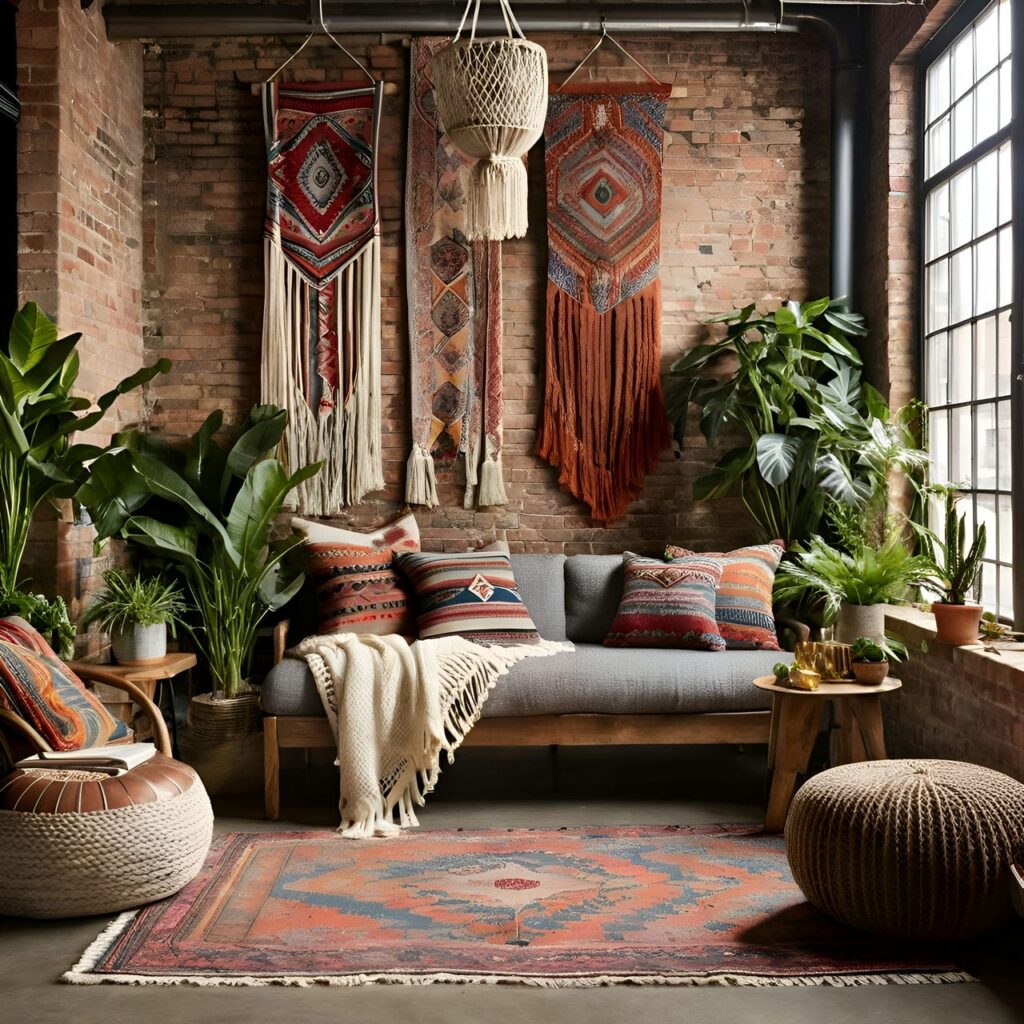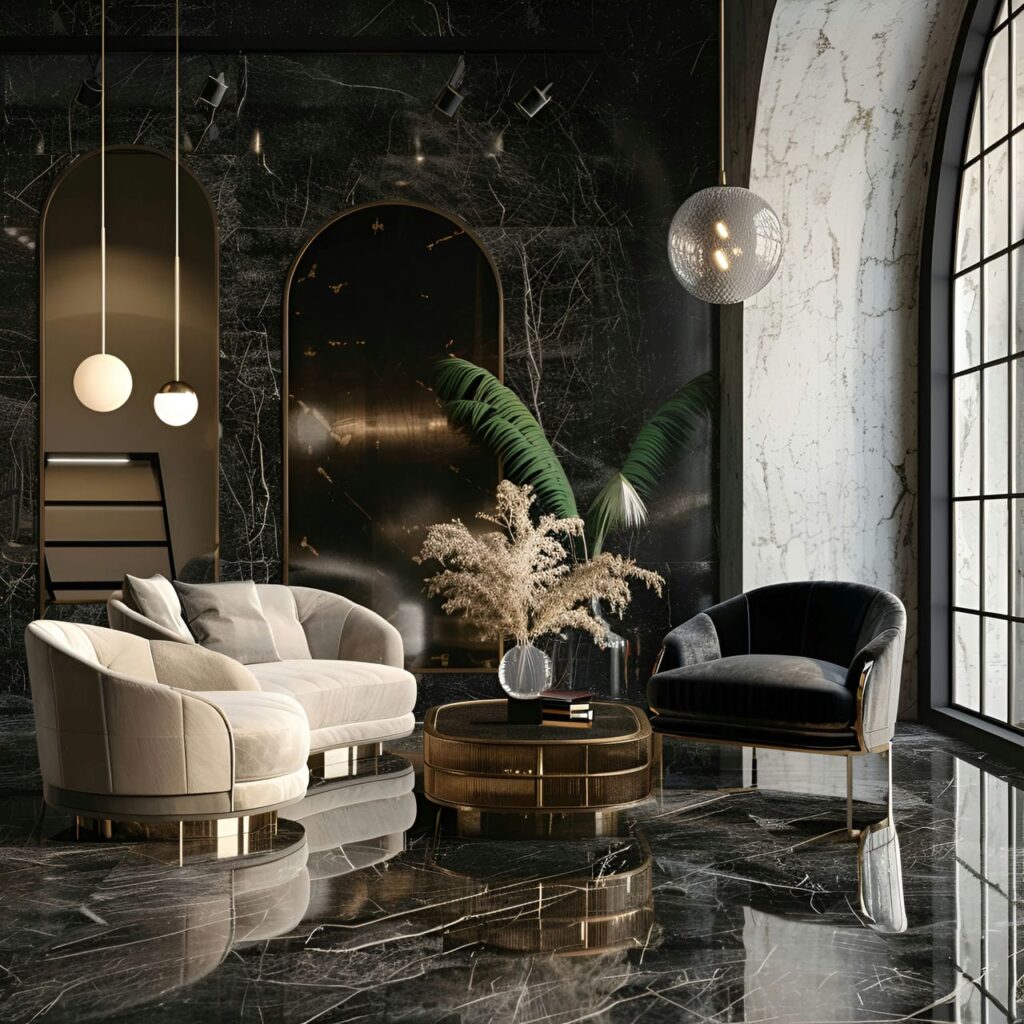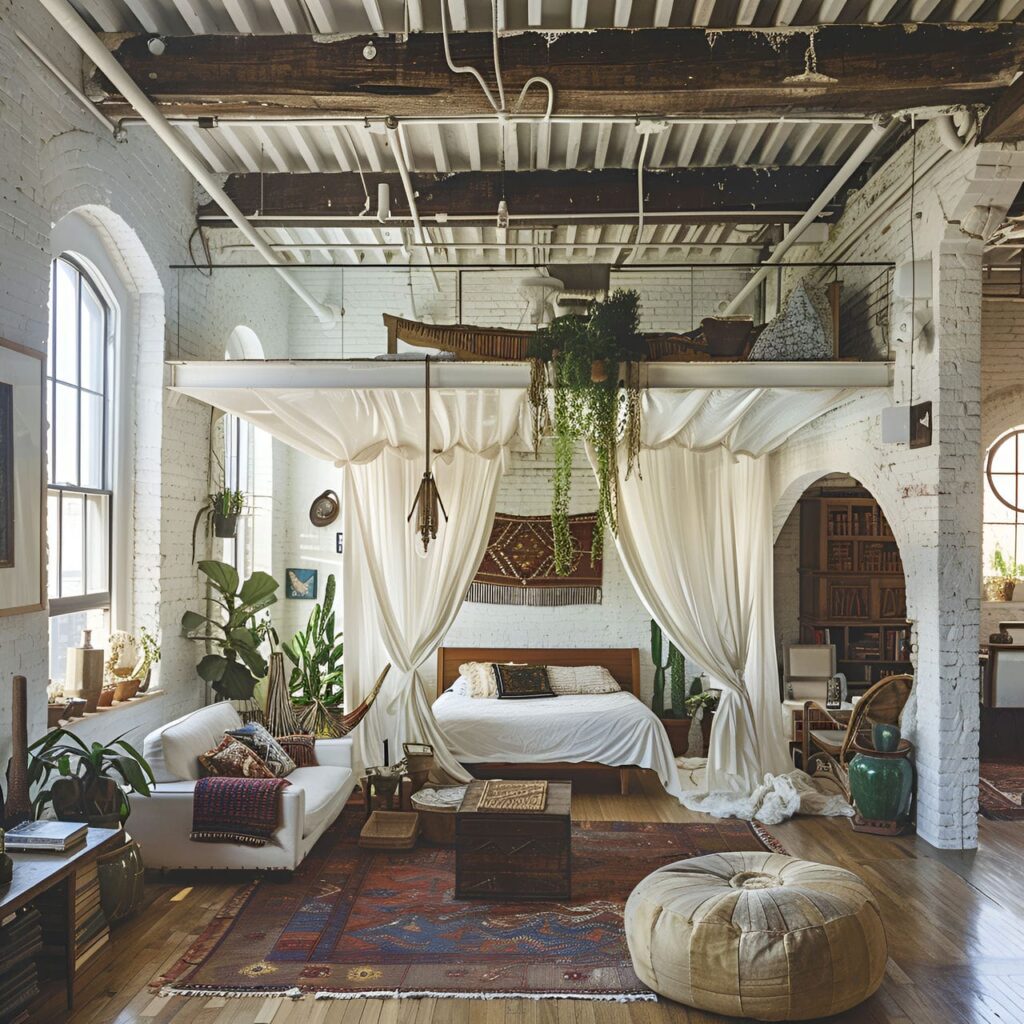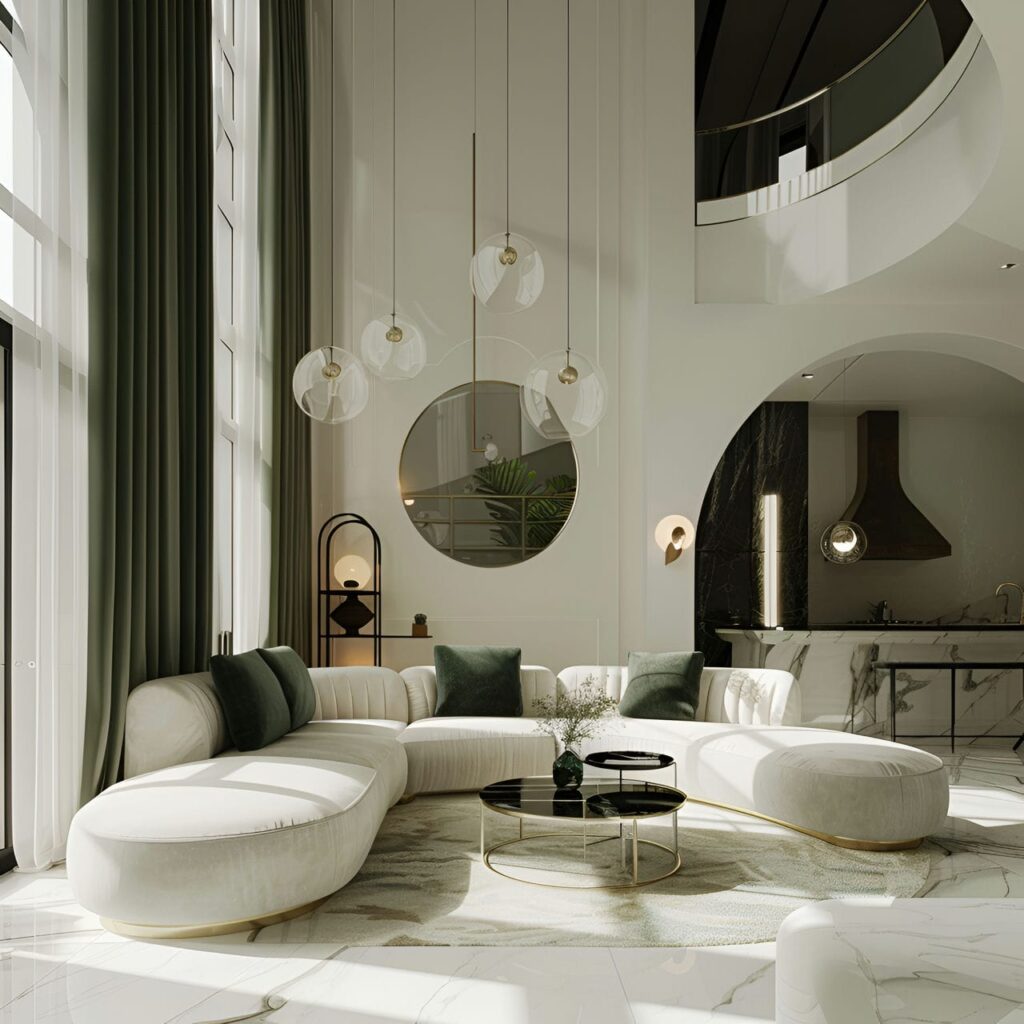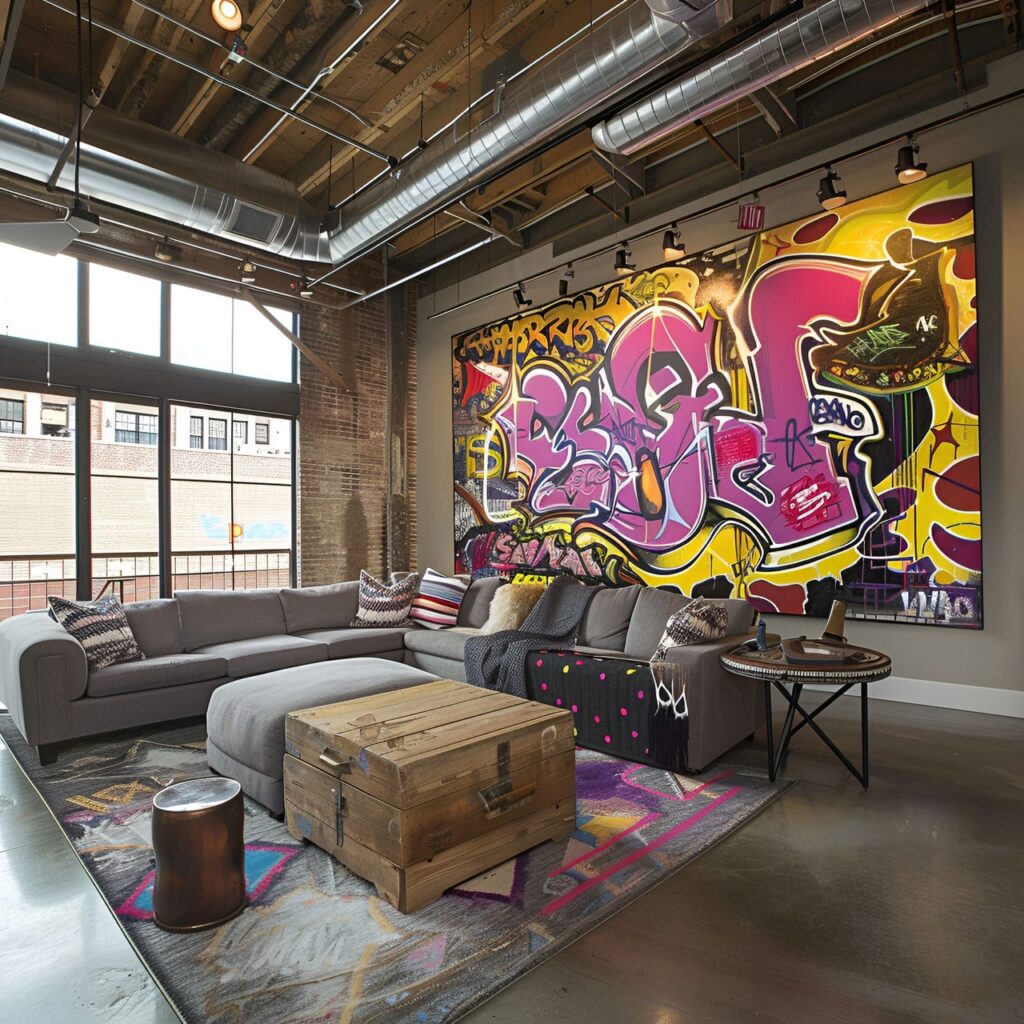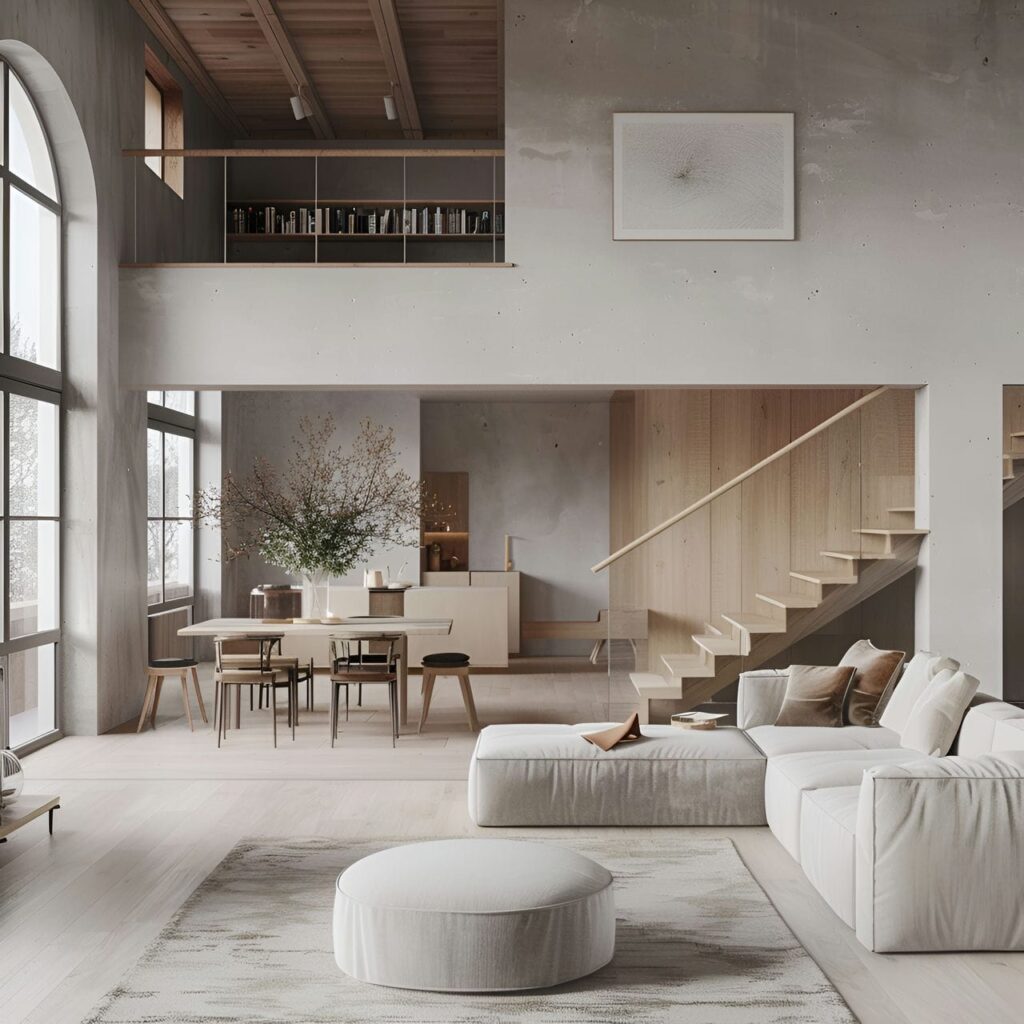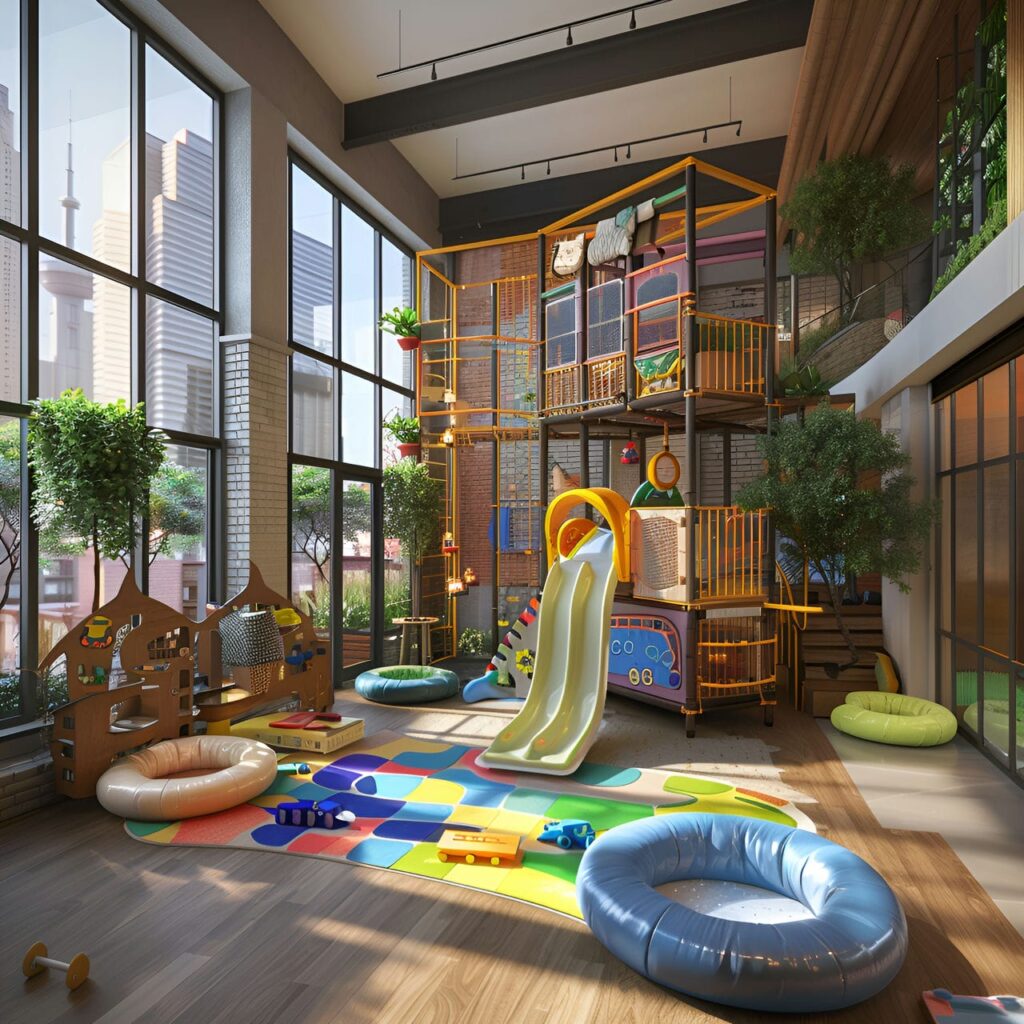Loft renovations focus on size, functionality, uses, furniture, and costs. Lofts measure 13 feet (4 meters) by 16 feet (5 meters) or 224 square feet (21 square meters) in 2000 square foot homes. Lofts serve various purposes, such as extra living spaces, home offices, recreational areas, and lounging spaces. They utilize under-roof spaces, offer privacy, take advantage of views, and enhance home value. Common loft shapes are open rectangular floor plans suitable for adaptive living configurations. Furnishings in lofts include sofas, sectionals, coffee tables, bookshelves, storage units, bar stools, dining tables, chairs, accent chairs, lounge seating, and multifunctional pieces. The typical loft ceiling height is 8 feet (2.4 meters) to 12 feet (3.7 meters), contributing to an open, airy atmosphere. Lofts are often painted in white, pastels, gray, blue, green, black, and yellow, creating a unique ambiance. Lofts are functional due to their open floor plans, natural light, repurposing of dead space, and resilient architectural details. Energy efficiency in lofts is achieved through insulation, high-performance glazing, efficient lighting, advanced HVAC systems, renewables, and air sealing. Renovation costs for lofts range from $100 (€90, £75) to $150 (€135, £115) per square foot. Factors affecting renovation costs include layout changes, finishing materials, and luxury additions. Hiring an architect for loft renovation is optional but beneficial for complex projects. Architects assist with design, regulatory compliance, project management, budgeting, layout optimization, value addition, and problem-solving. Redecorating a loft takes 2-4 weeks for cosmetic updates, extending to 8-16 weeks for extensive renovations. Homeowners face challenges like adhering to design rules, architectural challenges, loft conversion mistakes, budgeting, privacy and acoustics, furniture and storage solutions, and balancing aesthetics with practicality.
What is the typical size of a loft?
The typical size of a loft is 14 feet (4 meters) by 16 feet (5 meters) or 224 square feet (21 square meters). It allows enough space for a king or queen-size bed and additional furniture, such as a dresser, a wardrobe, and a sitting area. A loft of this size can fit in a house measuring 2000 square feet (186 square meters) or more. The average size of a loft is 14 feet (4 meters) by 18 feet (5 meters) or 252 square feet (23 square meters). This is suitable for a house measuring between 2000 square feet (186 square meters) to 2500 square feet (232 square meters). A loft of this size can accommodate a king-size bed, a sofa, a center table, two dressers, and a TV stand. It can also have a walk-in closet and a master bathroom, adding another 50 square feet (5 square meters) to 100 square feet (9 square meters) to the total area. The largest size of a loft is 16 feet (5 meters) by 22 feet (7 meters) or 352 square feet (33 square meters). This is ideal for a house measuring over 3003 square feet (279 square meters). A loft of this size can have a king or California king-size bed, a sitting area with a sofa and chairs, a desk, and a large TV. It can also have a spacious walk-in closet and a primary bathroom, ranging from 110 square feet (10 square meters) to 200 square feet (19 square meters).
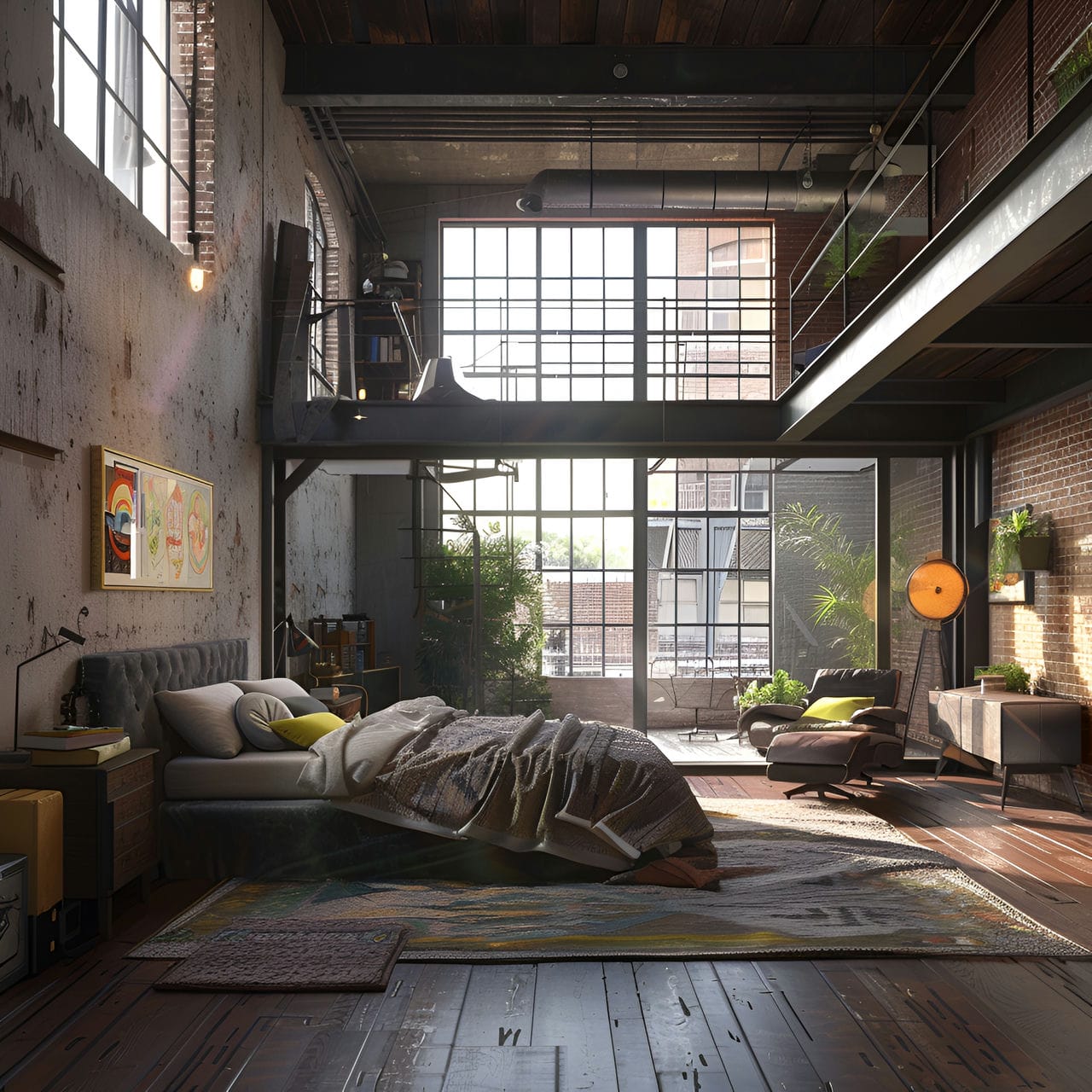
What is the use and purpose of a loft?
The use and purpose of a loft are to add flexible multi-use space, provide privacy while allowing supervision, take advantage of views, and increase home value by improving livability. Firstly, lofts are often used as additional living spaces in homes to add flexibility and functionality. Standard loft uses include extra bedrooms, home offices, recreational spaces like game rooms or craft areas, libraries, and lounging spaces. The open floor plan and ample loft space allow versatile furniture arrangements to suit these different purposes. Secondly, lofts are valued for their privacy while still allowing supervision of kids or connection to family activities below. Lofts work well as playrooms where kids can play creatively without disrupting other living spaces. Thirdly, lofts use views that would be missed on the ground floor. Lofts are lined with windows and doors to capitalize on scenic vistas. For more indoor/outdoor living, lofts can incorporate balconies or access to rooftop patios. Lastly, lofts add value and appeal to homes with their versatile space and ability to meet different lifestyle needs. For homeowners, lofts provide extra square footage and storage without the cost of complete room additions or expansions.
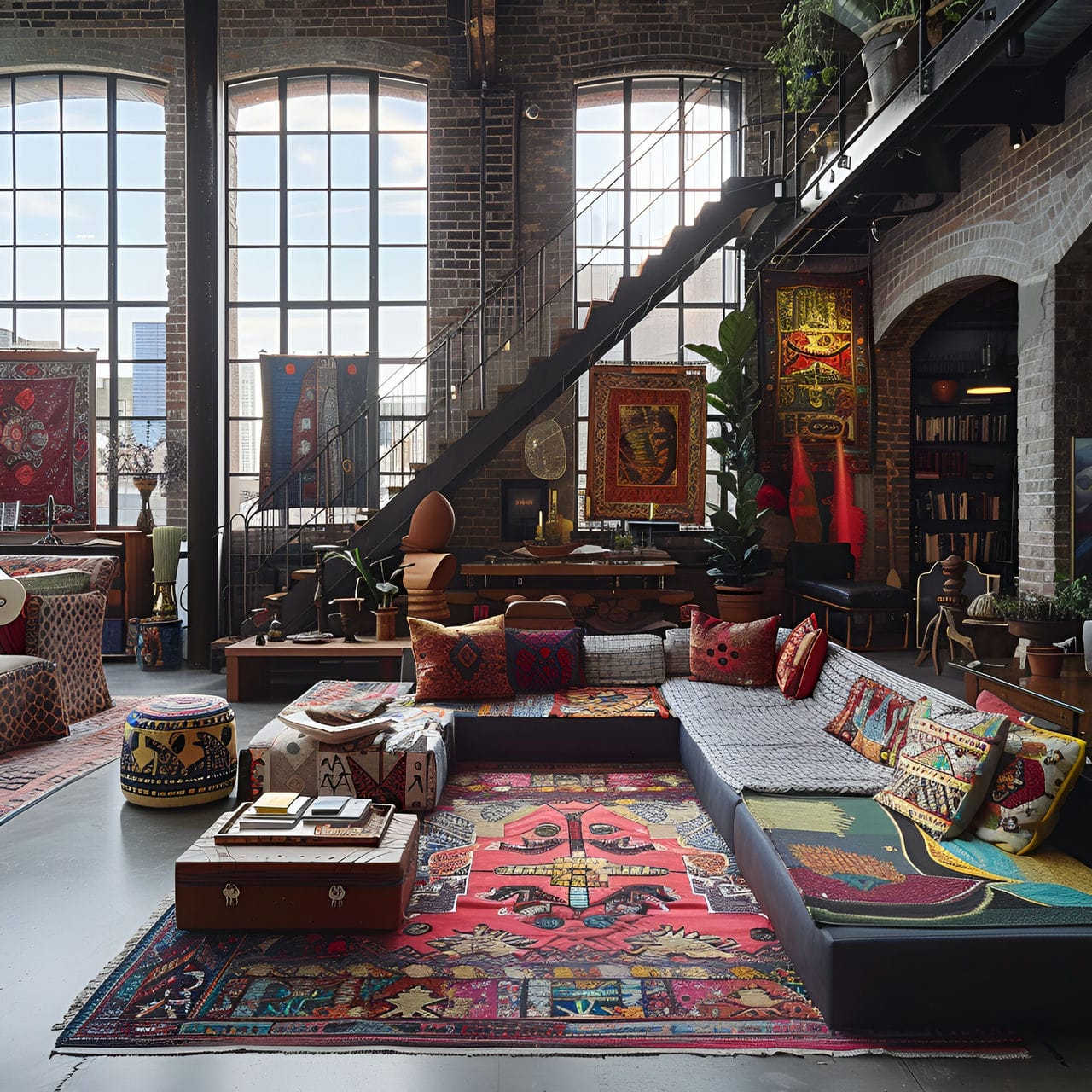
What is the typical shape of a loft?
The most common shape for loft spaces is an open rectangular floorplan, which capitalizes on the qualities that define these urban residential spaces – exposed pipes, high ceilings, and large windows. Lofts are adapted from old commercial, industrial, or warehouse buildings, featuring spacious square footage with few existing dividing walls to obstruct flexible living configurations. The rectangular loft shape works well to delineate areas of creative room separators like partial walls, screens, or novel elevated platforms while maintaining an airy openness.
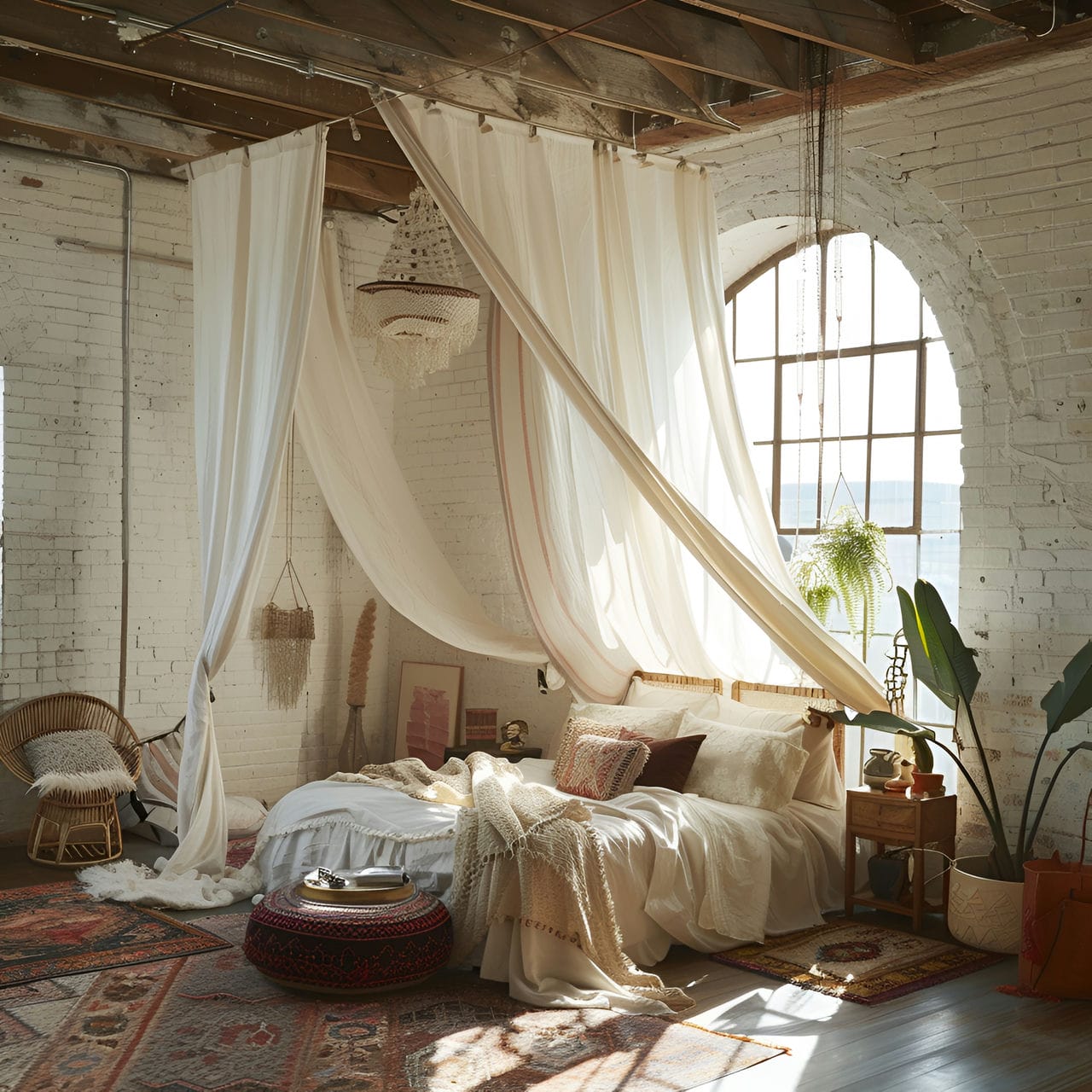
What furniture commonly equips a loft?
Listed below are the types of furniture commonly used in a loft:
- Sofas and Sectionals: Sofas and sectionals are furniture in a loft’s living area, providing comfortable seating for relaxation and socializing. A large sofa or sectional can anchor the room and define the living space.
- Coffee Tables: Coffee tables are central furniture in a loft’s living area, offering functionality and a design statement. They provide a surface for drinks, books, and decorative items and can also be used for casual dining. Coffee tables are selected for their visual impact, with materials like wood, metal, or glass that align with the industrial or modern vibe of the space.
- Bookshelves and Storage Units: Lofts often lack built-in storage, making bookshelves and storage units essential for organization and display. These furniture can be practical and decorative, housing books, media, and personal collections. They may also serve as room dividers in an open-plan loft, helping to define different areas within the space.
- Bar Stools and Counter Seating: Many lofts feature kitchen islands or breakfast bars, which require bar stools or counter seating. These furniture are not only functional for dining but also contribute to the social atmosphere of the loft. Bar stools often have a sleek and minimalist design, complementing the space’s modern aesthetic.
- Dining Tables and Chairs: A common feature in a loft is a dining area, and the choice of dining table and chairs is crucial for utility and style. The dining set can range from a casual bistro table for two to a large table for entertaining guests. The furniture is often chosen to make a statement, with designs that reflect the loft’s decor theme.
- Accent Chairs and Lounge Seating: Accent chairs and lounge seating add personality and additional seating options to a loft. This furniture can be bold, eye-catching, or subdued. They are placed in reading nooks, near windows, or social areas to provide comfortable spots for relaxation.
- Multifunctional Pieces: Multifunctional furniture is highly valued in a loft. Items like sleeper sofas, ottomans with storage, or nesting tables offer versatility and can adapt to different uses. These furniture help maximize the functionality of the space while maintaining a clean and uncluttered look.
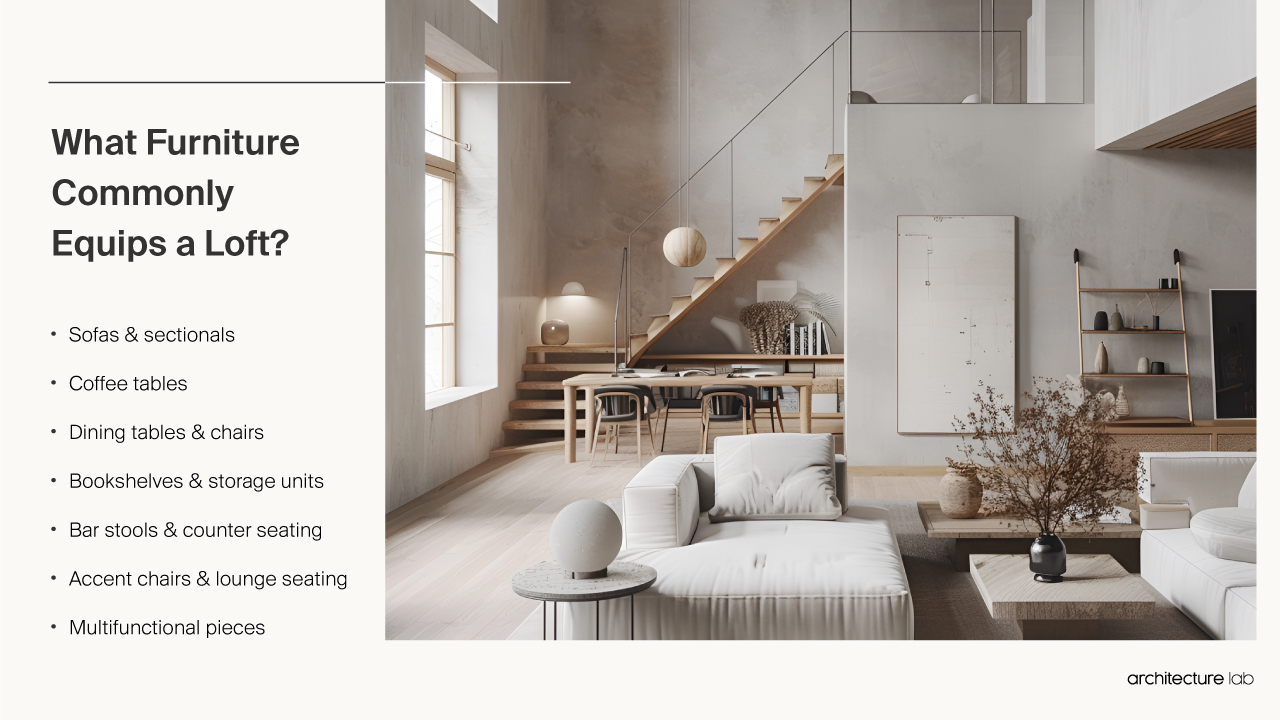
What is the normal ceiling height of a loft?
The typical ceiling height of a loft ranges from 8 feet (2.4 meters) to 12 feet (3.7 meters). Lofts are known for their open, airy spaces, often featuring higher ceilings than standard apartments or houses. This range can vary based on the building’s age, architectural style, and location. In historic or industrial buildings converted into lofts, ceilings may be on the higher end of this spectrum, providing a spacious and open feel. In some modern developments, especially in dense urban areas, loft ceilings might be closer to the lower end of the range to maximize unit density. This variation in ceiling heights is crucial for those looking at lofts for living or renovation purposes.
What colors are loft rooms usually painted?
Listed below are the colors usually used in loft rooms:
- White: White is a classic choice for loft spaces, often used to create a sense of openness and light. This color can make the room appear larger and brighter, especially in lofts with limited natural light. White also provides a neutral backdrop that allows furniture and decor to stand out.
- Pastels: Pastel colors, such as light blue, green, yellow, or peach, can add a soft and calming touch to a loft. These colors are light enough to maintain a spaciousness while adding more character than a simple white.
- Gray: Gray is a sophisticated color choice for a loft, balancing the starkness of white and the intensity of darker hues. This color can range from light, almost silvery tones to deep charcoal. Gray works well with various decor styles and can add a touch of modern elegance to a loft space.
- Blue: Blue, notably lighter shades or pastels, can create a soothing and peaceful atmosphere in a loft. Blue can be paired with white for a crisp, clean look or warmer colors for a more lively effect.
- Green: Green can bring a sense of nature into a loft. Lighter shades can keep the space open and airy, while darker greens can add a touch of drama. This color can work well in various styles, from a rustic, earthy vibe to a more contemporary, bold look.
- Black: Black can be used effectively in a loft to create a dramatic and sophisticated space. This color can be striking when used on a feature wall or to highlight architectural details. Black works best in a loft with plenty of natural light and can be balanced with lighter furniture and decor.
- Yellow: Yellow can bring a sense of warmth and cheerfulness to a loft. Lighter, pastel yellows can keep the space fair and open, while deeper, golden hues add a rich warmth. This color can be paired with various colors, from crisp white to cool blues, for different effects.
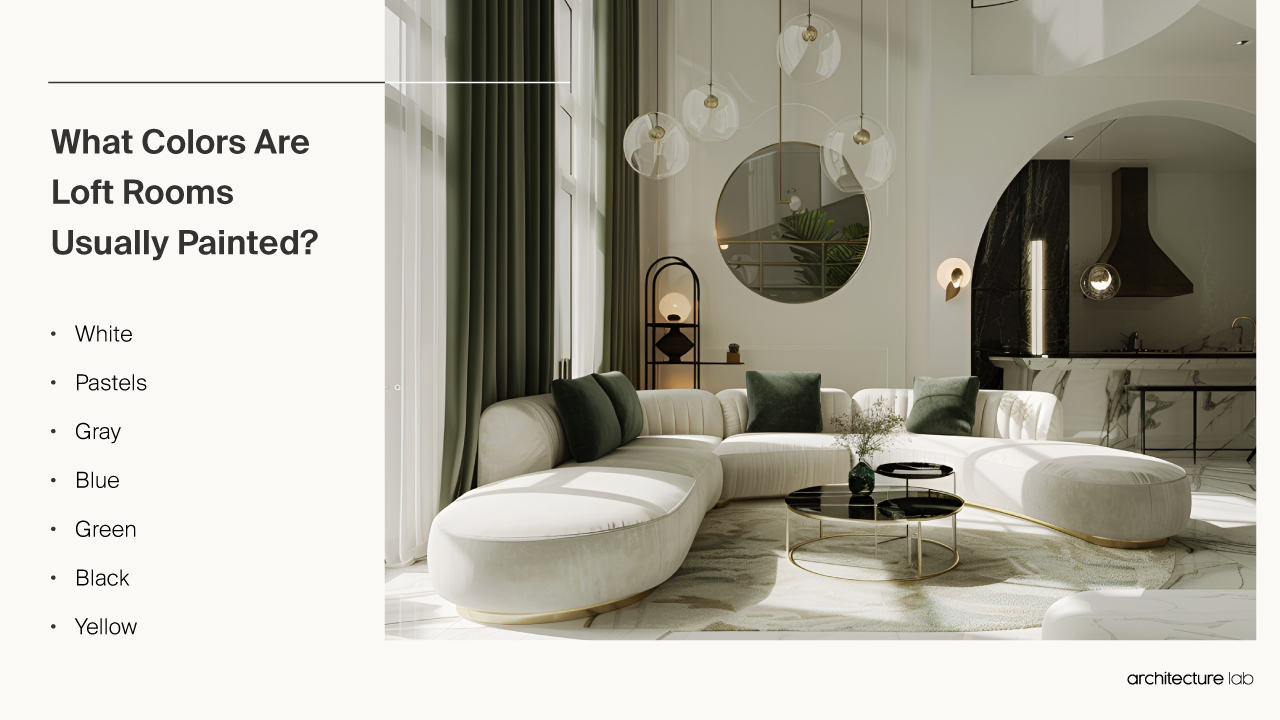
What makes the loft functional?
The Loft is functional with open floor plans, natural light, the ability to repurpose dead space, and resilient, industrial architectural details. Firstly, the open and adaptable loft floor plan is critical to its functionality. Lofts provide flexibility to configure the space to suit changing needs over time. Movable room dividers can create semi-private zones for a bedroom, office, lounge, or hobby area that can be adjusted as needs evolve. Secondly, the high ceilings and abundance of windows in converted industrial lofts enhance functionality. Tall ceilings allow for two-story furniture like bunk beds or loft beds to maximize the use of vertical space. Thirdly, lofts leverage unused space under the roofline that would otherwise be wasted. Used as a spare bedroom, home gym, or storage, a loft uses this void to increase usable square footage. The privacy and separation from other living zones also help productivity for home offices or creative pursuits. Lastly, lofts frequently incorporate durable, industrial materials like exposed brick and piping that enhance utility. The robust bones and finishes are low-maintenance, perfect for family spaces. Concrete floors and metal railings withstand heavy use.
How is energy efficiency achieved in a loft?
Energy efficiency is achieved in a loft through insulation, high-performance glazing, efficient lighting/controls, advanced HVAC systems, on-site renewables, and air sealing. Firstly, energy efficiency in a loft starts with proper insulation. Installing high-quality insulation materials like rock wool or fiberglass batts between the roof rafters ensures heat does not escape through the roof. Adequate insulation rated at R-38 or higher is recommended for greenhouse efficiency. Secondly, energy-efficient windows should be installed in skylights or dormers, preferably triple pane. High-performance glazing reduces heat transfer and keeps interiors comfortable while allowing light. Exterior solar shades on sunny exposures prevent overheating in summer. Thirdly, energy-efficient lighting like LED bulbs reduces electricity consumption while enhancing livability. Automated controls that turn lights on/off based on occupancy or daylight levels also cut energy use. Fourthly, an energy-efficient HVAC system adequately sized for the space maintains indoor comfort while minimizing energy demand. Ductless mini-split heat pumps offer climate control without duct losses. Lastly, renewable energy systems like solar panels or water heaters supplement electricity and heating needs through sustainable on-site power generation.
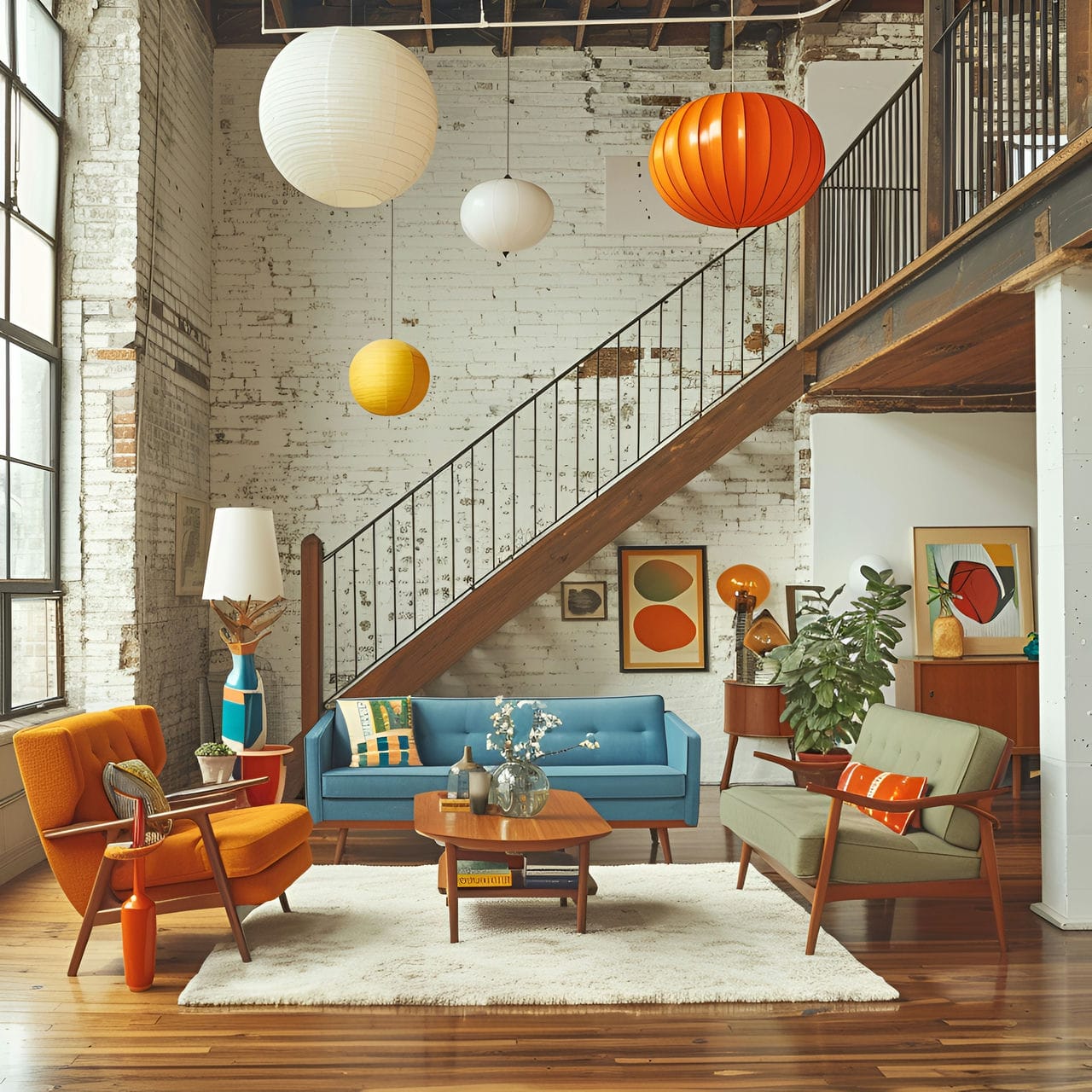
How much does it typically cost to renovate a loft?
Transforming old urban industrial buildings into residential loft spaces runs between $100 (€90, £75) to $150 (€135, £115) per square foot in renovation costs, with most loft unit layouts spanning 1,000 square feet (92 square meters) to 3,000 square feet (279 square meters). On the lower end, refreshing a modest 1,200 square feet (112 square meters) loft with new flooring, paint, lighting fixtures, and opening up walls for a more contemporary flow comes to $120,000 (€108,000, £90,000) to $180,000 (€162,000, £135,000). Larger renovations of 2,000 square feet (186 square meters) average $200,000 (€180,000, £150,000) to $300,000 (€270,000, £225,000) for upgrades like new kitchens and bathrooms, exposed brick accents, refinished concrete floors, enhanced lighting plans and customized organizational built-ins. Top-tier designer makeovers or high-end structural changes to lofts surpassing 2,500 square feet (232 square meters) exceed $375,000 (€338,000, £280,000), reaching upwards of $500,000 (€450,000, £375,000) when integrating smart home technology, spa-like baths, high-end custom cabinetry, and premium appliances throughout. Factors like layout changes, finishing materials, and luxury add-ons impact loft remodel budgets. Renovation to 1,000 to 1,500 square feet (92 to 139 square meters) lofts cost $100,000 (€90,000, £75,000) to $225,000 (€202,500, £168,750) on average, while renovations from 2,000 to 3,000 square feet (186 to 279 square meters) range $200,000 (€180,000, £150,000) to $400,000+ (€360,000+, £300,000+).
What factors affect the loft renovation?
Listed below are the factors that affect the loft renovation:
- Property Suitability: Assigning whether the loft is suitable for a conversion is crucial. This involves checking the structure of the building, the height and space of the loft, and the feasibility of adding additional weight to the structure.
- Structural Changes: Loft renovations involve significant structural changes, such as altering the roof structure, adding joists, or strengthening the foundation. These changes must be carefully planned and executed to ensure the structural integrity and stability of the building.
- Weight Considerations: A loft renovation will increase the weight of the home. Ensuring that the building’s structure can support this additional weight is vital. This may involve exposing and inspecting the foundations, beams, or lintels that will be expected to hold more weight.
- Building Regulations: Loft renovations require clearance under Building Regulations. The government sets these regulations to ensure that all building work meets specific standards of safety, energy efficiency, and accessibility.
- Insulation and Ventilation: Good insulation is crucial in a loft renovation to ensure the new space is energy-efficient and comfortable. Proper ventilation is also essential for creating a comfortable living environment in the loft.
- Interior Design and Storage: The design and style of the loft should fit in with the home’s existing style. Storage is essential, as the new space may have limited storage options. Creative storage solutions or additional built-in storage may be required.
- Disruptions: Loft renovations can be disruptive, causing noise, dust, and inconvenience. This can be particularly disruptive if you work from home or have young children. It is essential to be aware of these potential disruptions and plan accordingly.
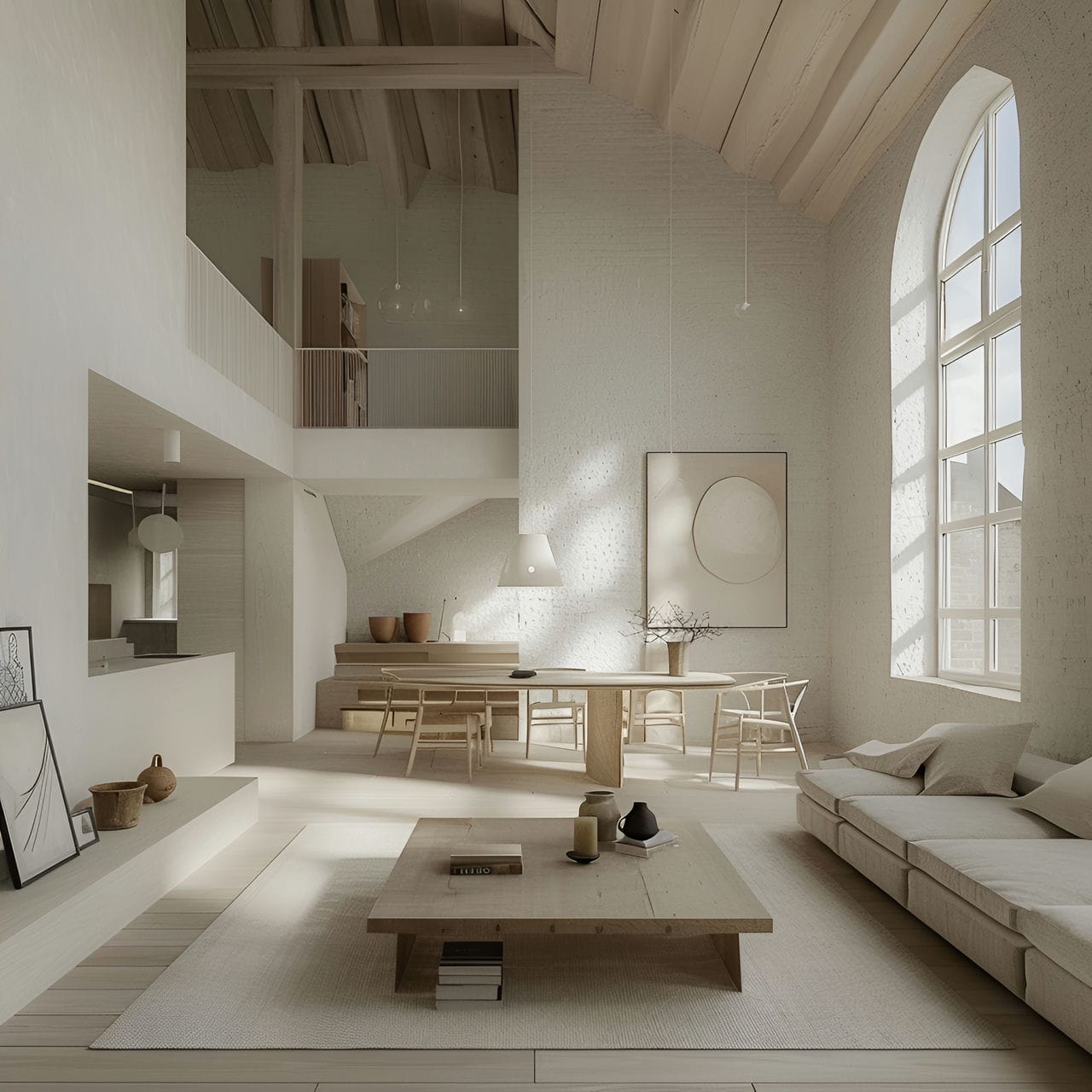
Is an architect required to renovate a loft?
No, hiring an architect for a loft renovation is not required but recommended. Having an architect can be beneficial as they can help design the space, ensure compliance with building regulations, and potentially increase the home’s value. Loft conversions contain multiple aspects that need careful planning and design. An architect can help navigate these complexities, including structural considerations, light planning, and maximizing the use of space. They can also guide through the regulations, which can be complex and easily misunderstood. These regulations cover minimum space requirements, fire safety, and structural integrity.
How can an architect help you upgrade a loft?
Listed below are how an architect can help an owner upgrade a loft:
- Design Expertise: An architect brings years of education and training in design, allowing them to create functional and pleasing lofts. Architects understand the structural integrity of the building and ensure the design complies with it. They produce detailed plans, drawings, and specifications that will be used throughout the project.
- Regulatory Compliance: One of the most important aspects of any loft conversion is compliance with building regulations. An architect will work closely with local authorities to ensure loft conversion meets all necessary regulations. They will also handle any critical planning permission applications, ensuring that all the required documentation is submitted and deadlines are met.
- Project Management: An architect will provide project management services once the design and planning stages of the loft are complete. They will work with the builder and other contractors to ensure the project is completed to the highest standard. This includes regular site visits, quality control, and conducting all necessary approvals and inspections.
- Budgeting and Cost Control: One of the biggest concerns for homeowners considering a loft conversion is the cost. An architect can provide valuable guidance on budgeting and cost control. They will work to establish a project budget and advise on where to save money and invest in high-quality materials and finishes.
- Optimizing Layout: One of the key benefits of working with an architect is their ability to maximize loft conversion layout. They understand the constraints and opportunities presented by the existing structure and can design a layout that maximizes space, light, and functionality.
- Adding Value: Poorly designed loft extensions and conversions can damage the property’s resale price. An architect can help create a design that meets current needs and adds value to a home in the long run.
- Problem Solving: Loft conversions can be complex, with many potential issues and complications. An architect can help to anticipate and solve these problems, saving time, stress, and potentially costly mistakes. They can also make necessary adjustments during the development to ensure the project stays on track.
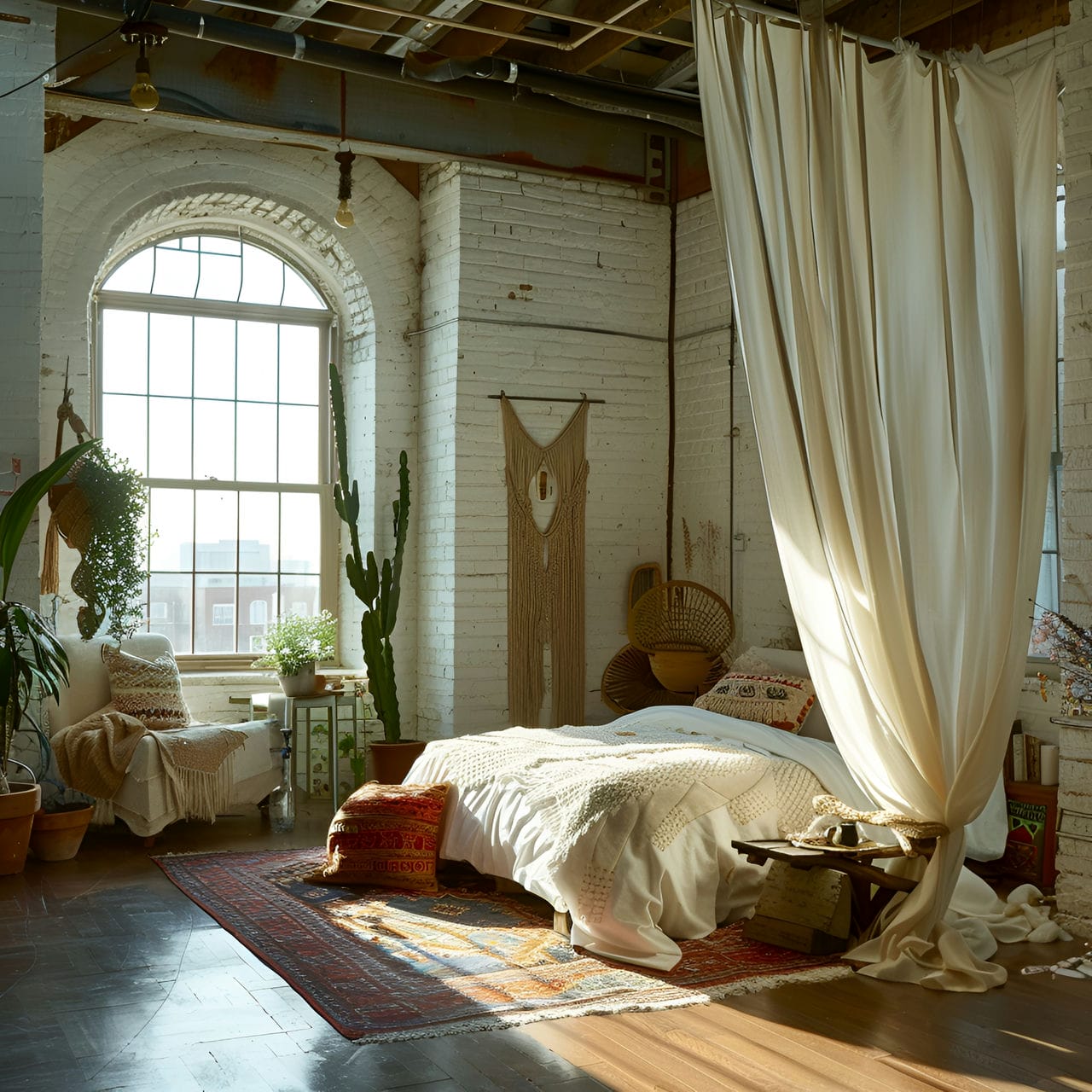
How much does it cost to hire an architect to renovate a loft?
Architect for renovating raw loft spaces or transforming existing units into the more contemporary downtown living range from $2,500 (€2,250, £1,875) to $300,000 (€273,000, £261,000) for basic consultations on layout changes and materials selection up to $7,500 (€6,750, £5,625) to $20,000 (€18,200, £17,400) for full creative design including permitting help. Average rates fall $100 (€91, £87) to $150 (€136.5, £130.5) per hour from initial conceptual sketches and meetings through construction administration. Simple refresh projects 92 square meters (1,000 square feet) benefit most from minimal services of assessing potentials and providing a few recommended layout drawings for $2,500 (€2,250, £1,875) to $3,500 (€3,150, £2,625). Heavily customized loft renovations exceeding 157 square meters (1,700 square feet), especially entire duplex and multi-level transformations, utilize fuller architectural services costing $5,000 (€4,500, £3,750) to $7,500+ (€6,750+, £5,625+). This includes engineering consultations, 3D rendered models to meet client aesthetics, coordinating zoning or building code approvals, and managing contractor bid selection if desired.
Is it worth it to hire an architect to upgrade a loft?
Yes, hiring an architect for a loft upgrade can be a worthwhile investment, depending on the scope and complexity of the project. Loft conversions can provide additional living space, increase property value, and offer energy efficiency benefits. They are more cost-effective compared to other home improvement projects like extensions. Hiring an architect can vary, with fees ranging from 8-10% of the total project cost. The decision to hire an architect should be based on several factors. If loft conversion requires complex structural changes, an architect can provide detailed plans, cost estimates, and advice on materials. They can also ensure the project meets all necessary regulations and building codes.
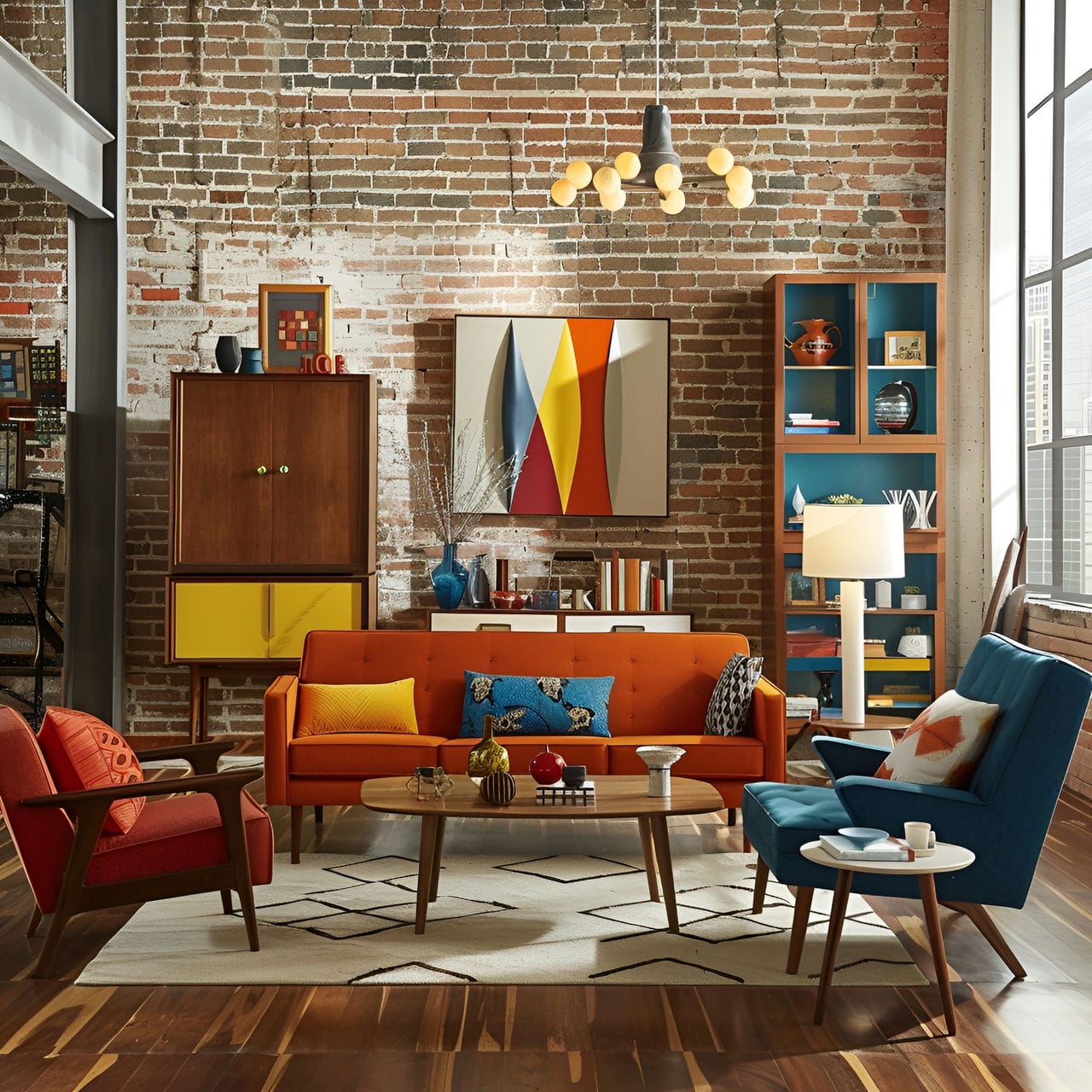
How long is needed to redecorate a loft?
8 to 12 weeks is needed to redecorate the loft. Firstly, the timeline for redecorating a loft depends on the scope of work. Cosmetic updates like fresh paint, new flooring, and minor furnishings can be accomplished quickly in 2 to 4 weeks. More extensive renovations involving layout changes, custom built-ins, wiring updates, etc., range from 8 to 16 weeks. Secondly, critical path items like custom carpentry, cabinetry, or specialty finishes can extend timelines. Bespoke storage solutions or high-end tilework rely on artisan availability. Custom elements often require 8-12 week lead times, not including installation. Lastly, working around other construction trades slows redecorating timelines. If the loft remodel includes any structural, mechanical, or electrical updates, decorating work may need to be sequenced between those projects, adding weeks. Coordinating various contractors requires proper scheduling and project management.
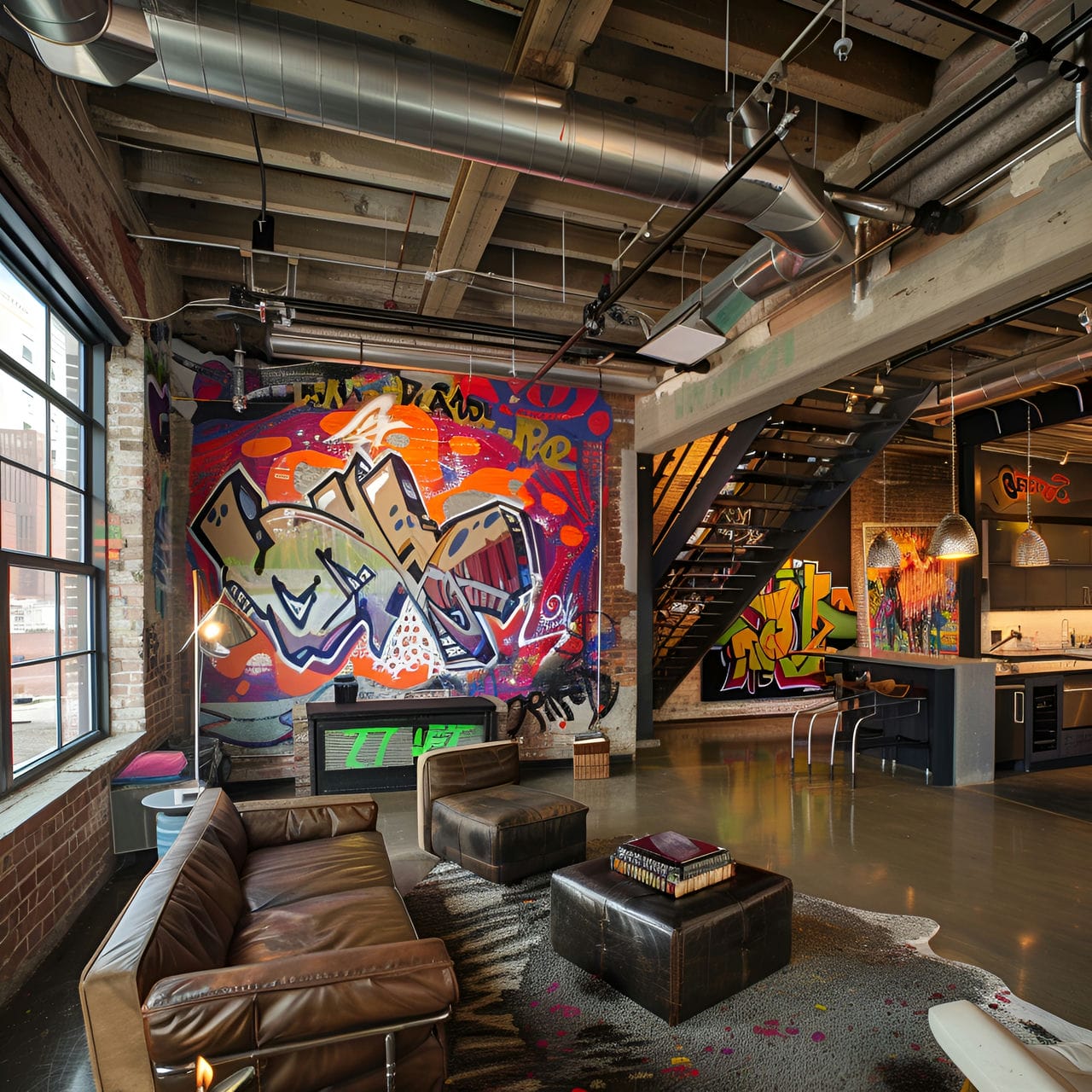
What are the struggles of the homeowner to redecorate a loft?
Listed below are the struggles of the homeowner to redecorate a loft:
- Adhering to Outdated Design Rules: Homeowners need help with the pressure to adhere to traditional loft design rules, such as sticking to open floor plans or following conventional layouts. These rules can limit a loft’s style, layout, and decor, potentially stifling personal preferences and creativity.
- Dealing with Architectural Challenges: Lofts often have architectural challenges, such as sloping ceilings, awkward windows, and exposed beams. These features can pose significant decorating challenges, making placing furniture or creating a cohesive design complex.
- Navigating Loft Conversion Mistakes: Loft conversions can be complex and fraught with potential mistakes. Common issues include not checking if the property is suitable for a loft conversion, attempting a DIY project without expert knowledge, and misunderstanding planning permission requirements.
- Budgeting for the Project: Loft conversions and redecorations can be expensive. Homeowners often need help setting a realistic budget, obtaining multiple quotes from contractors, and tracking expenses.
- Managing Lack of Privacy and Acoustics: Loft-style homes often need more privacy due to their open floor plans, which can be challenging when living with others.
- Finding Suitable Furniture and Storage Solutions: Finding suitable furniture and storage solutions can be challenging due to the architectural features of lofts, such as sloping ceilings and quirky room shapes. Custom-built storage solutions can maximize space and maintain a cohesive design.
- Balancing Aesthetics and Practicality: Lofts often have unique character and industrial features that homeowners want to preserve. Practical considerations like storage, privacy, and temperature control conflict with goals.
